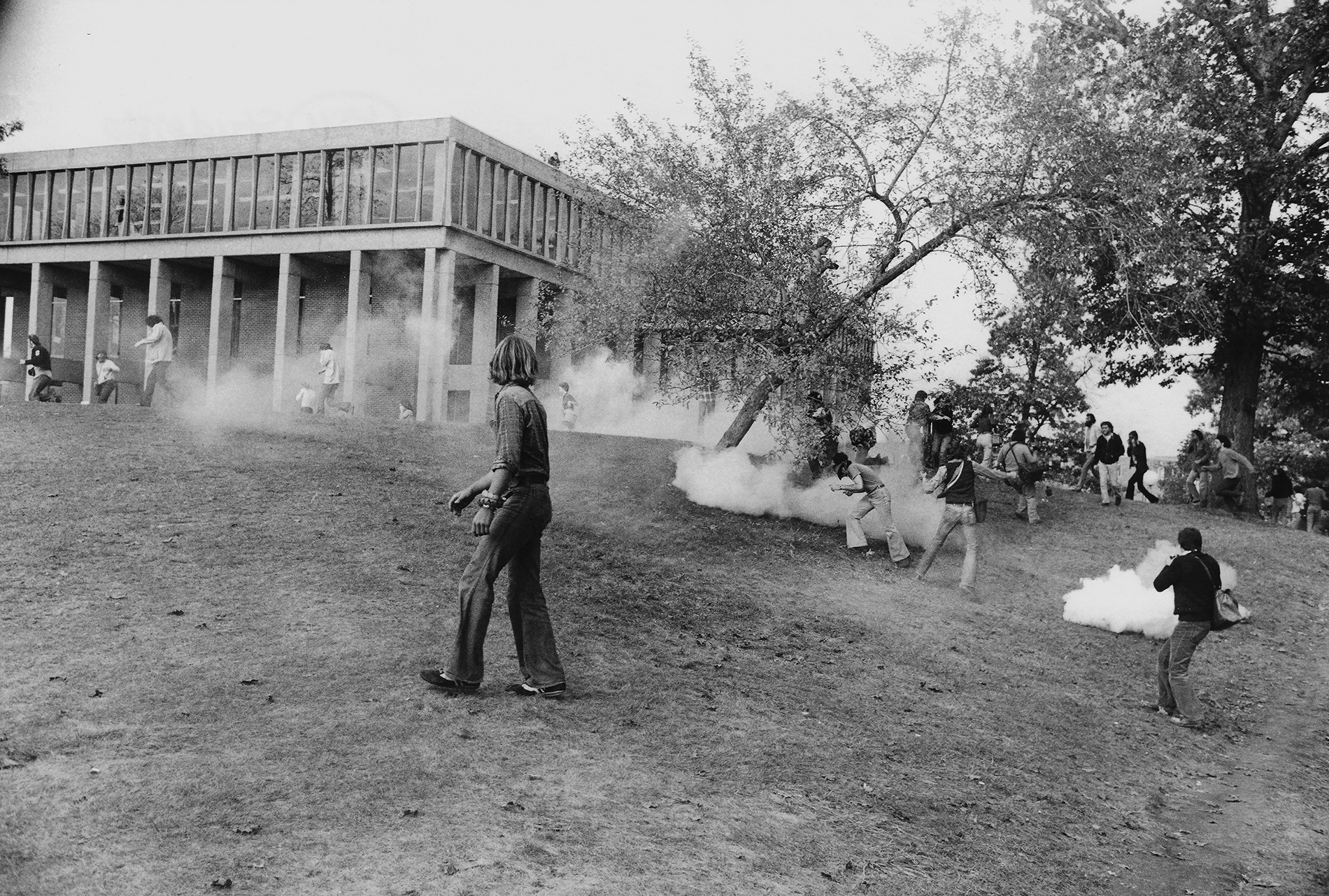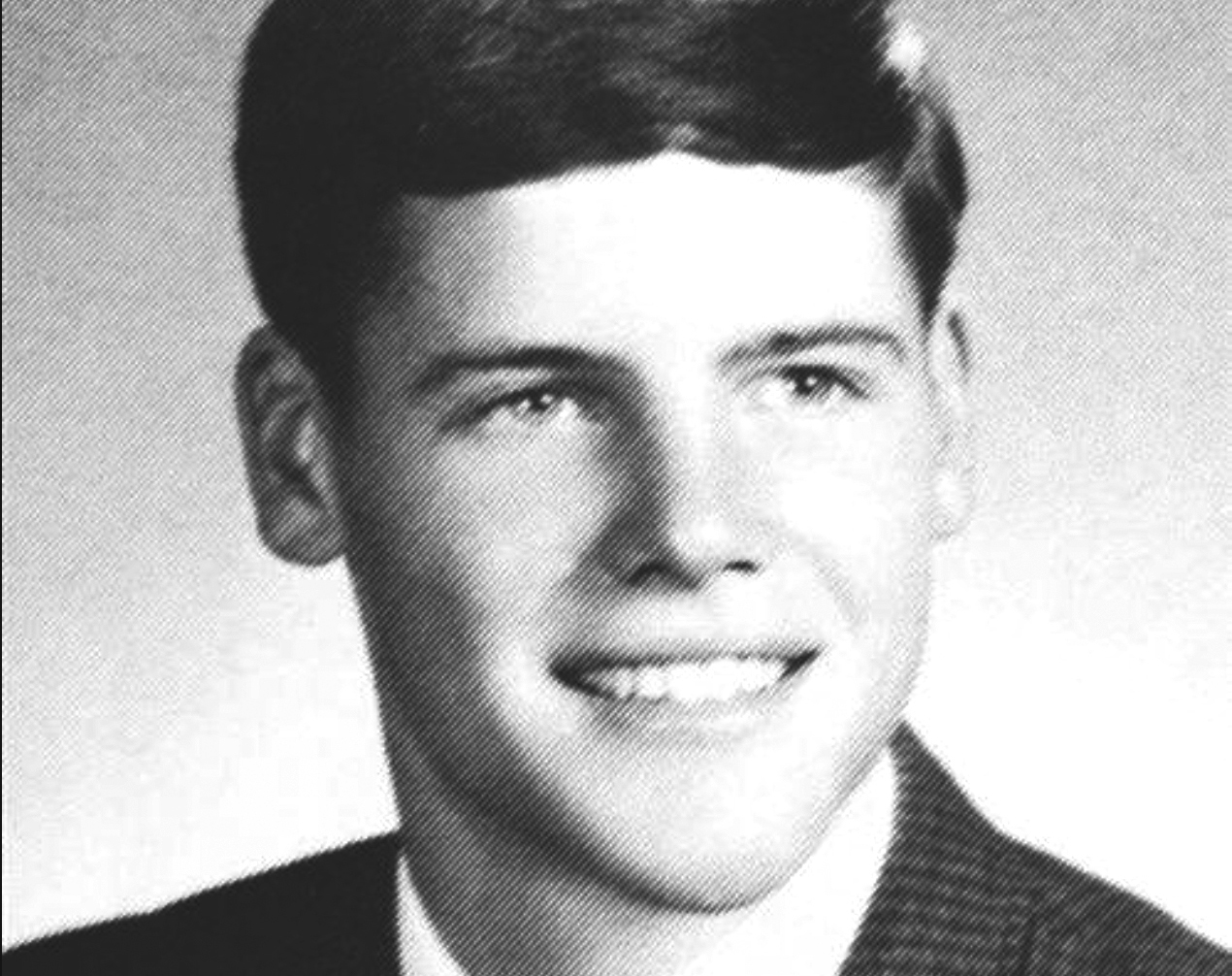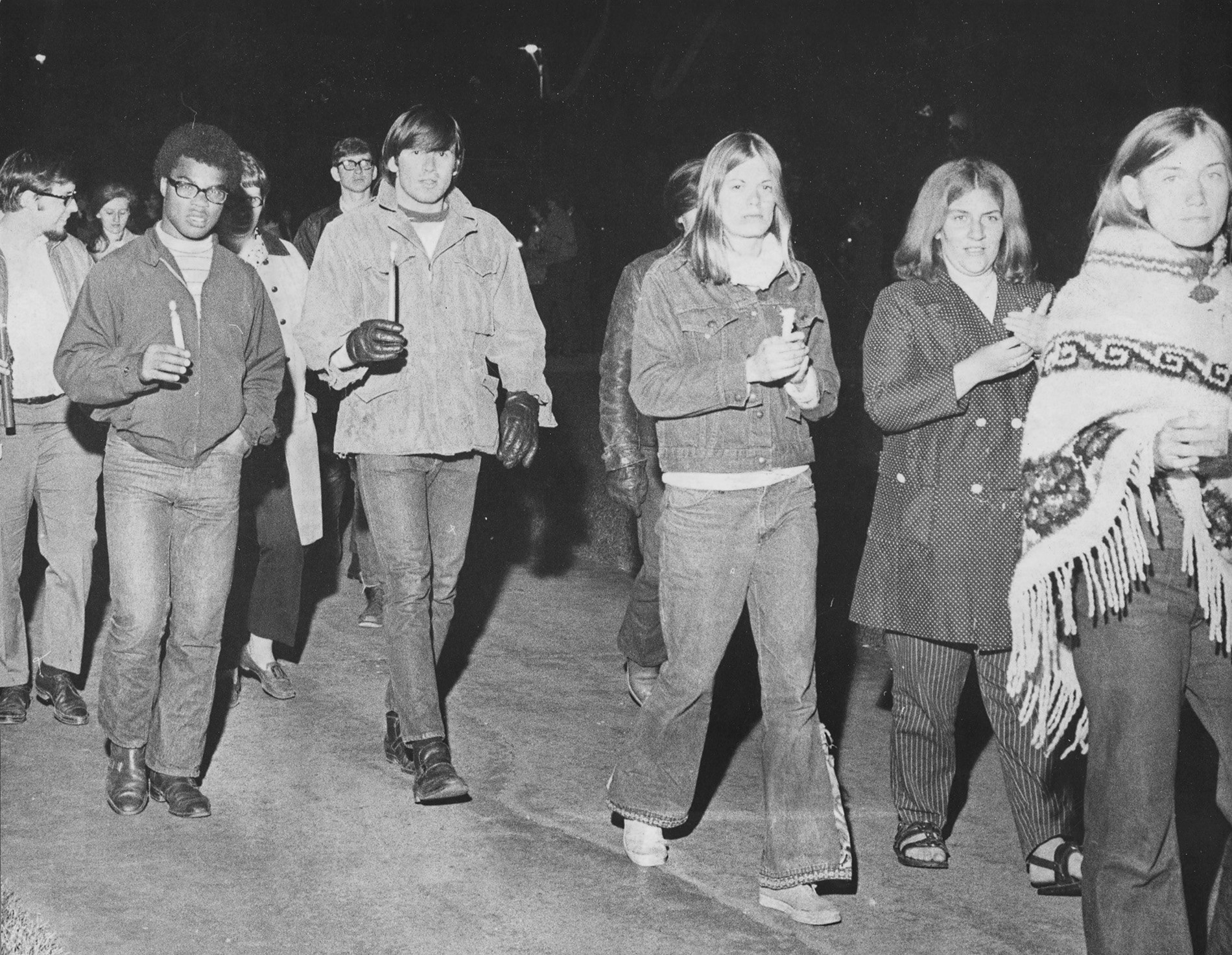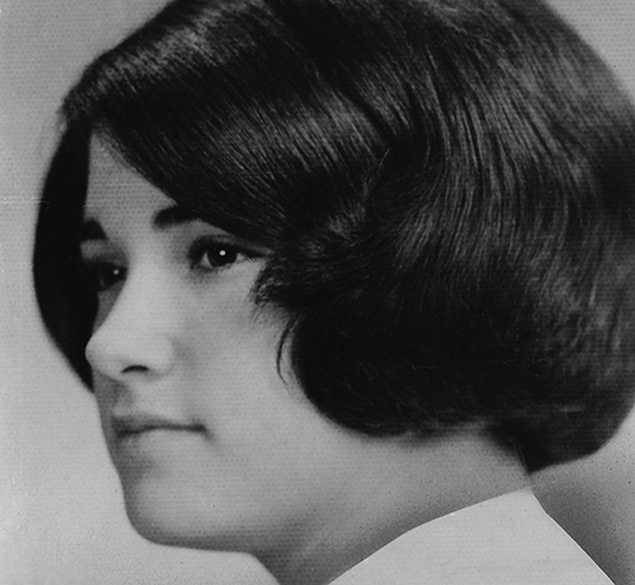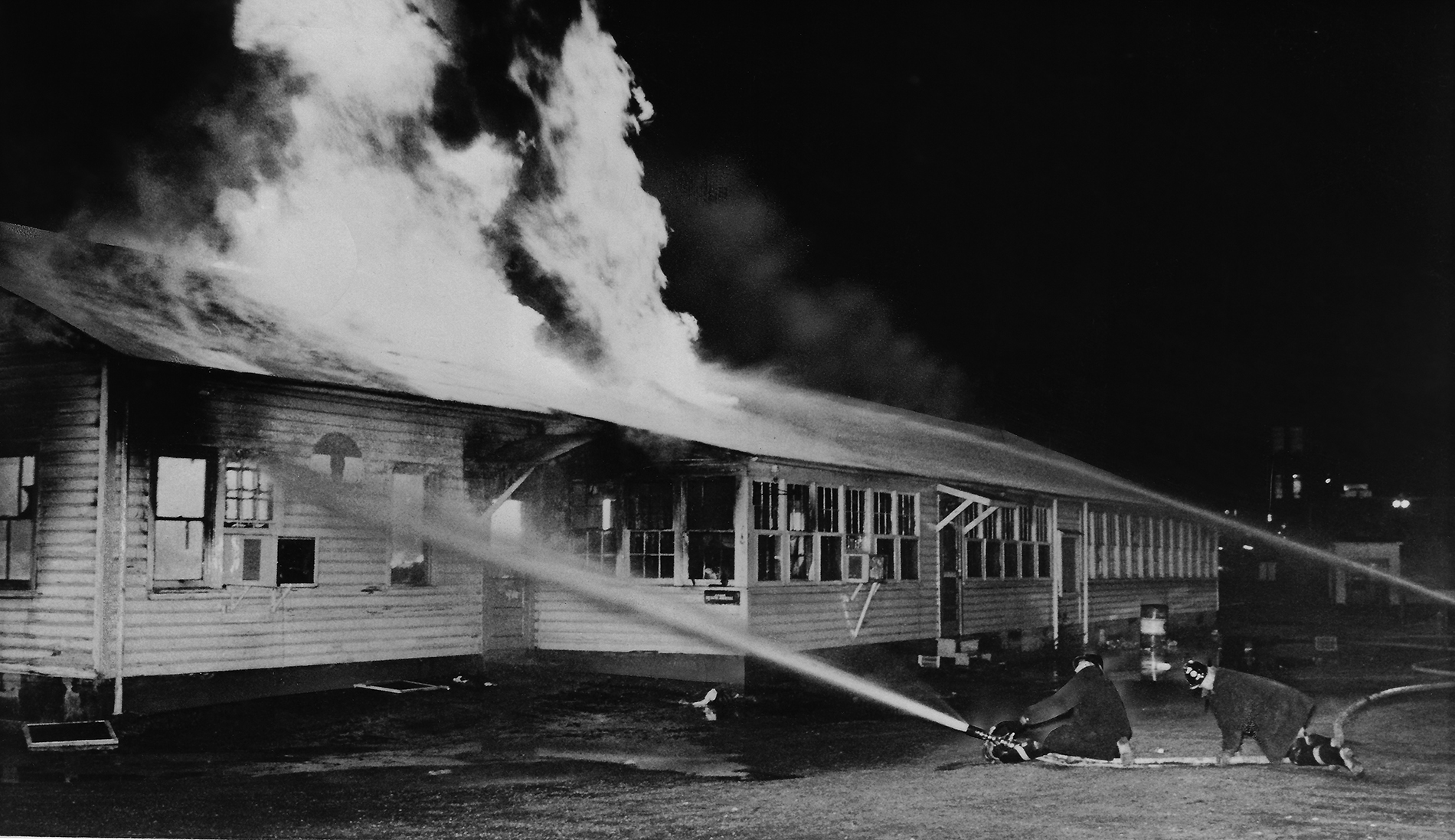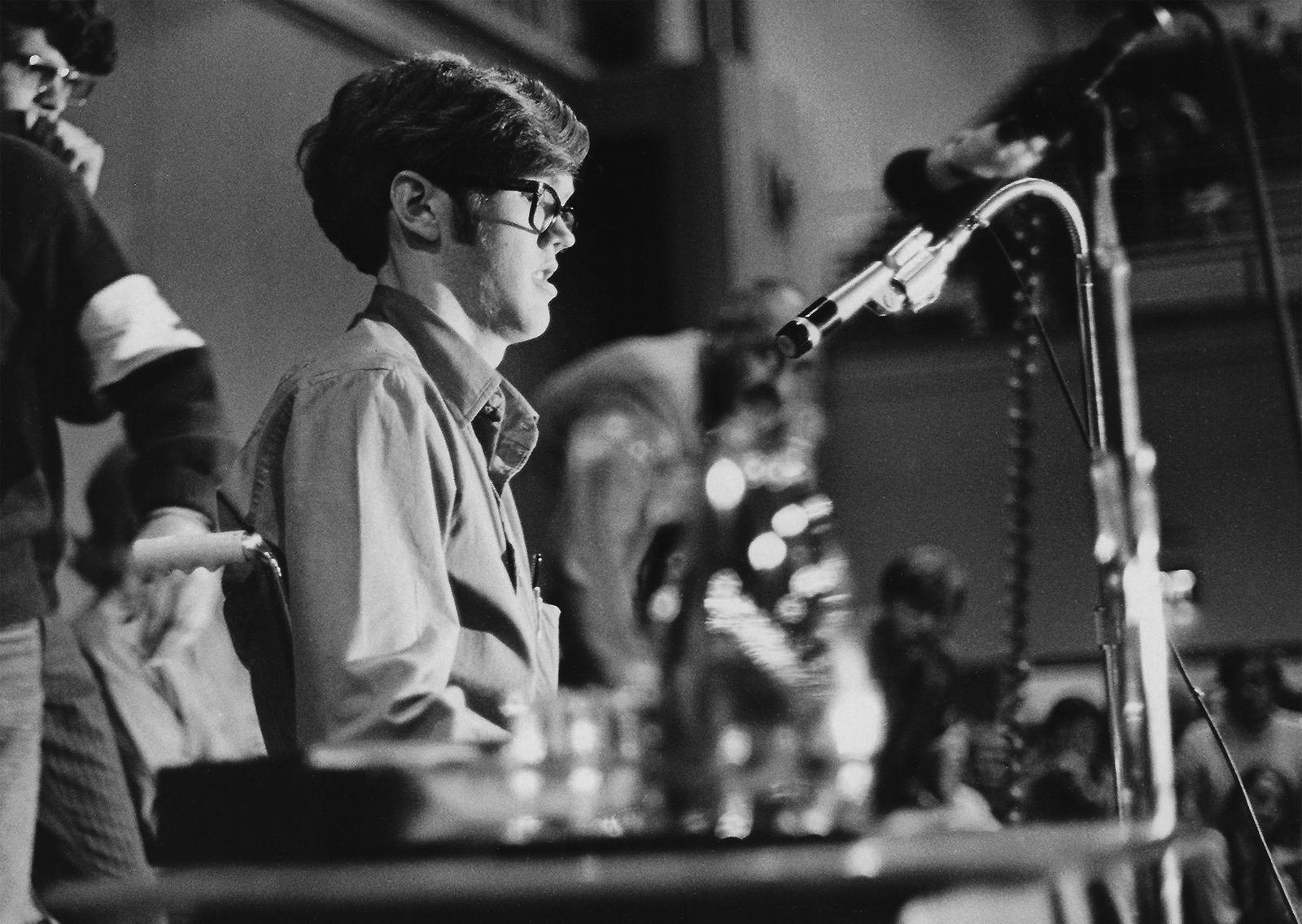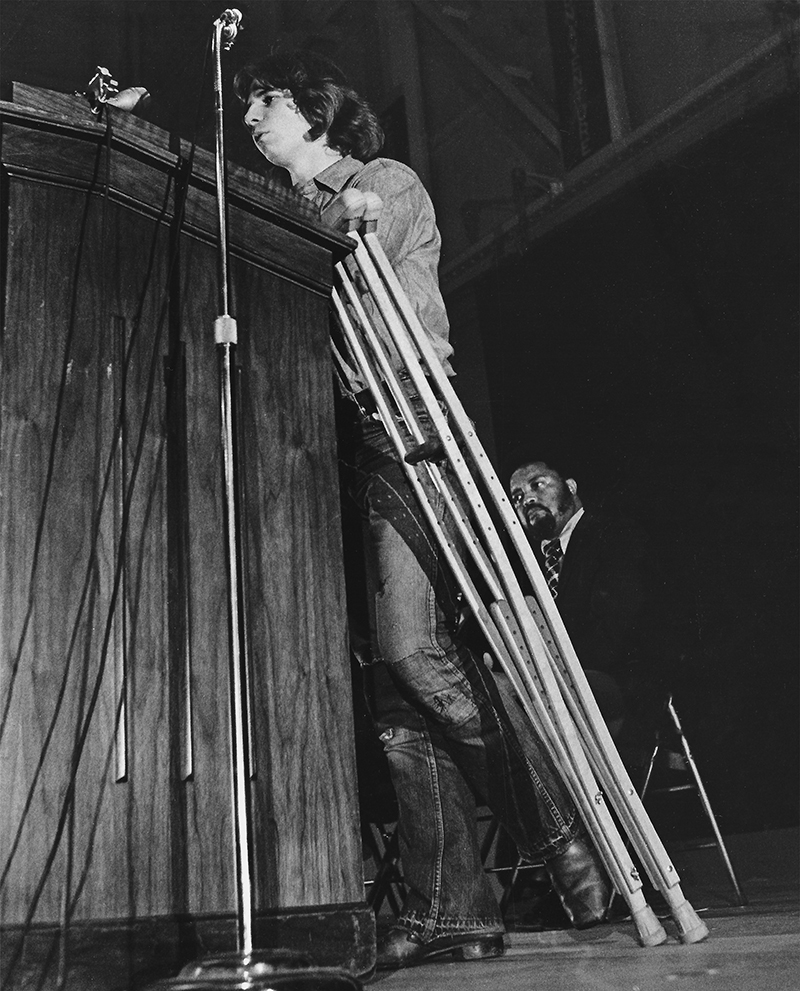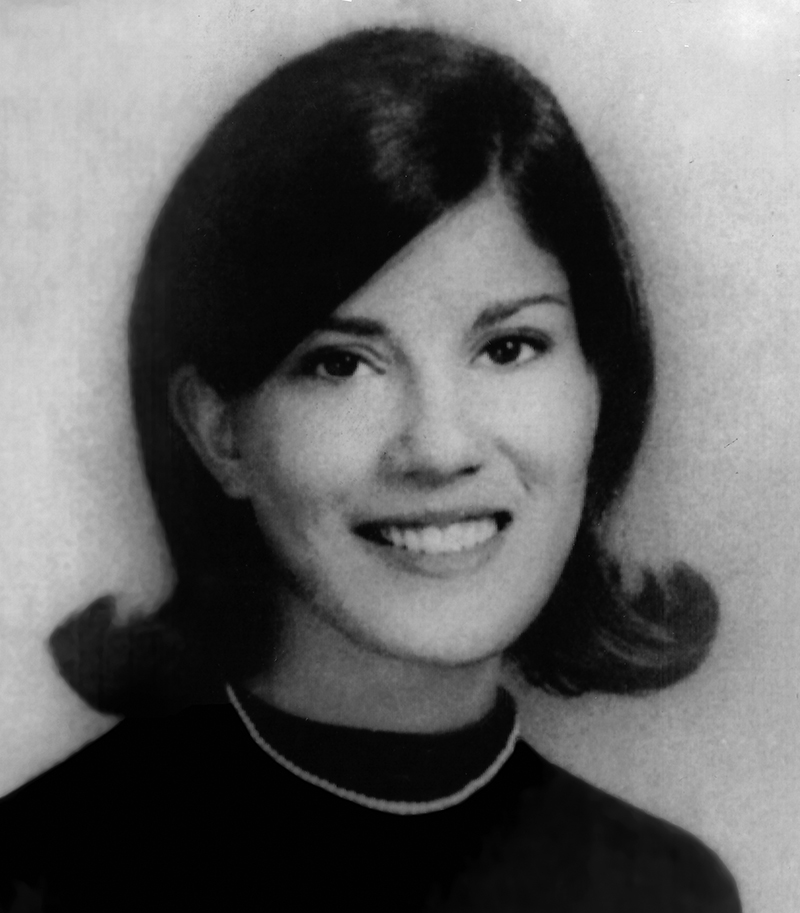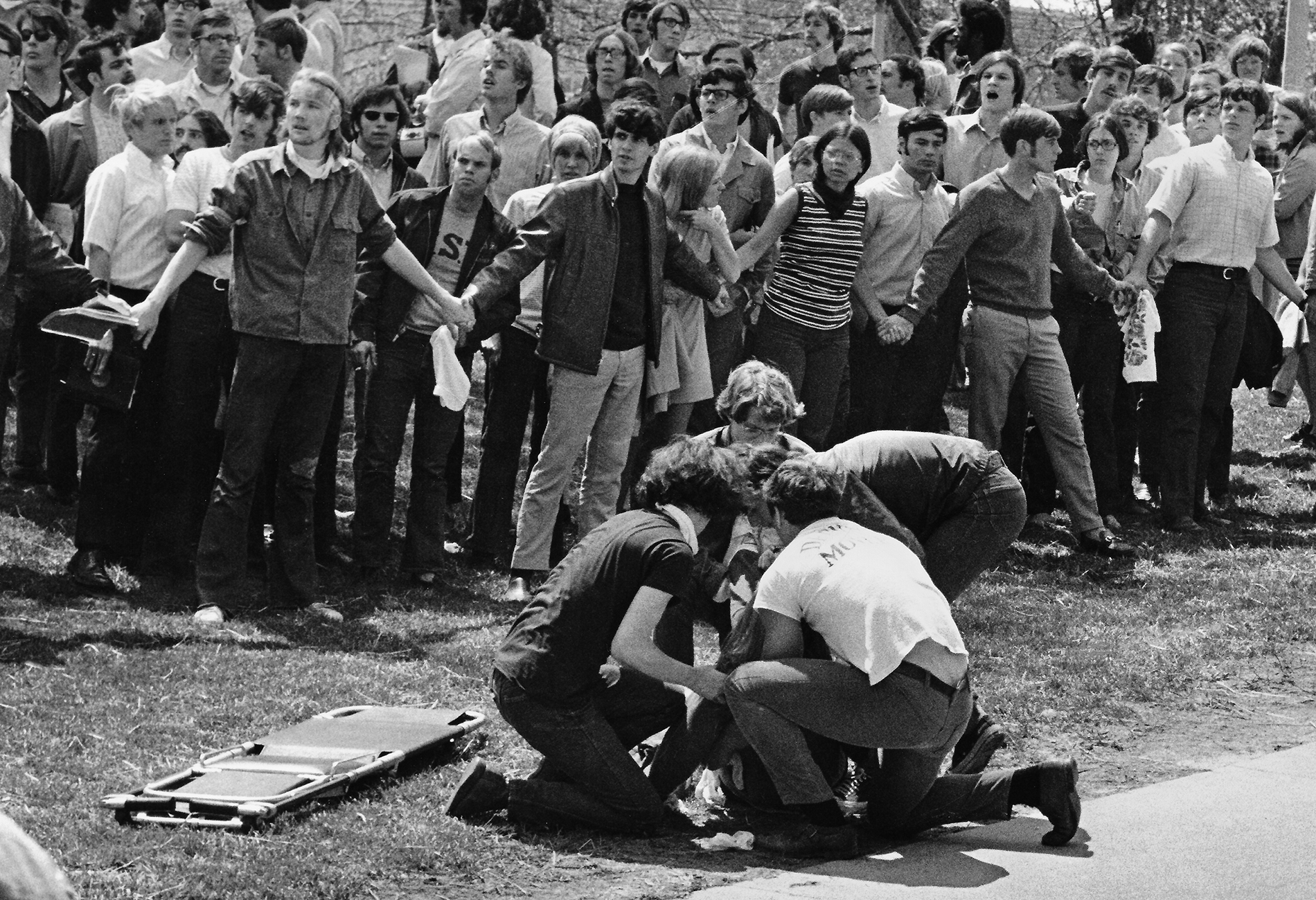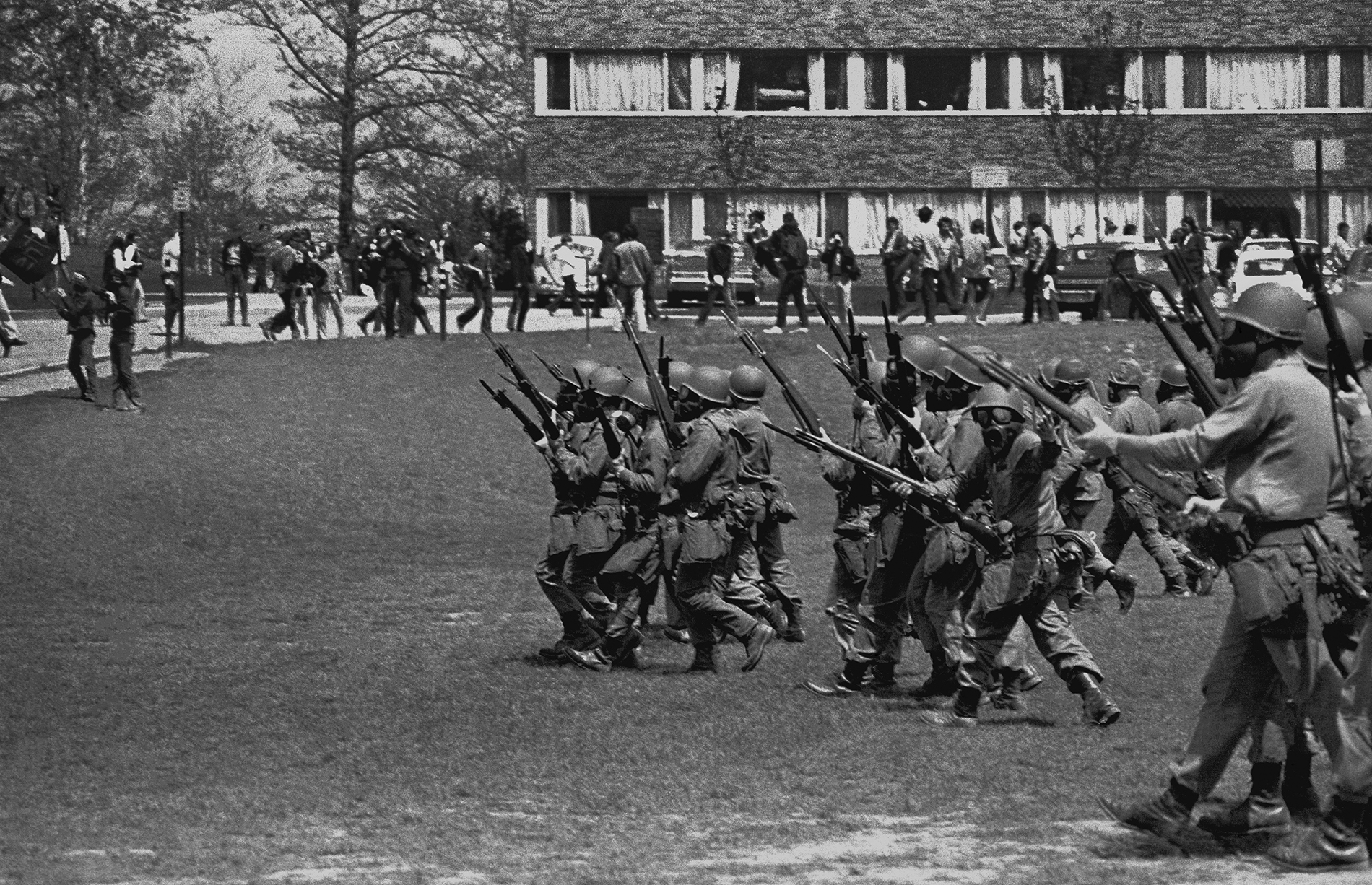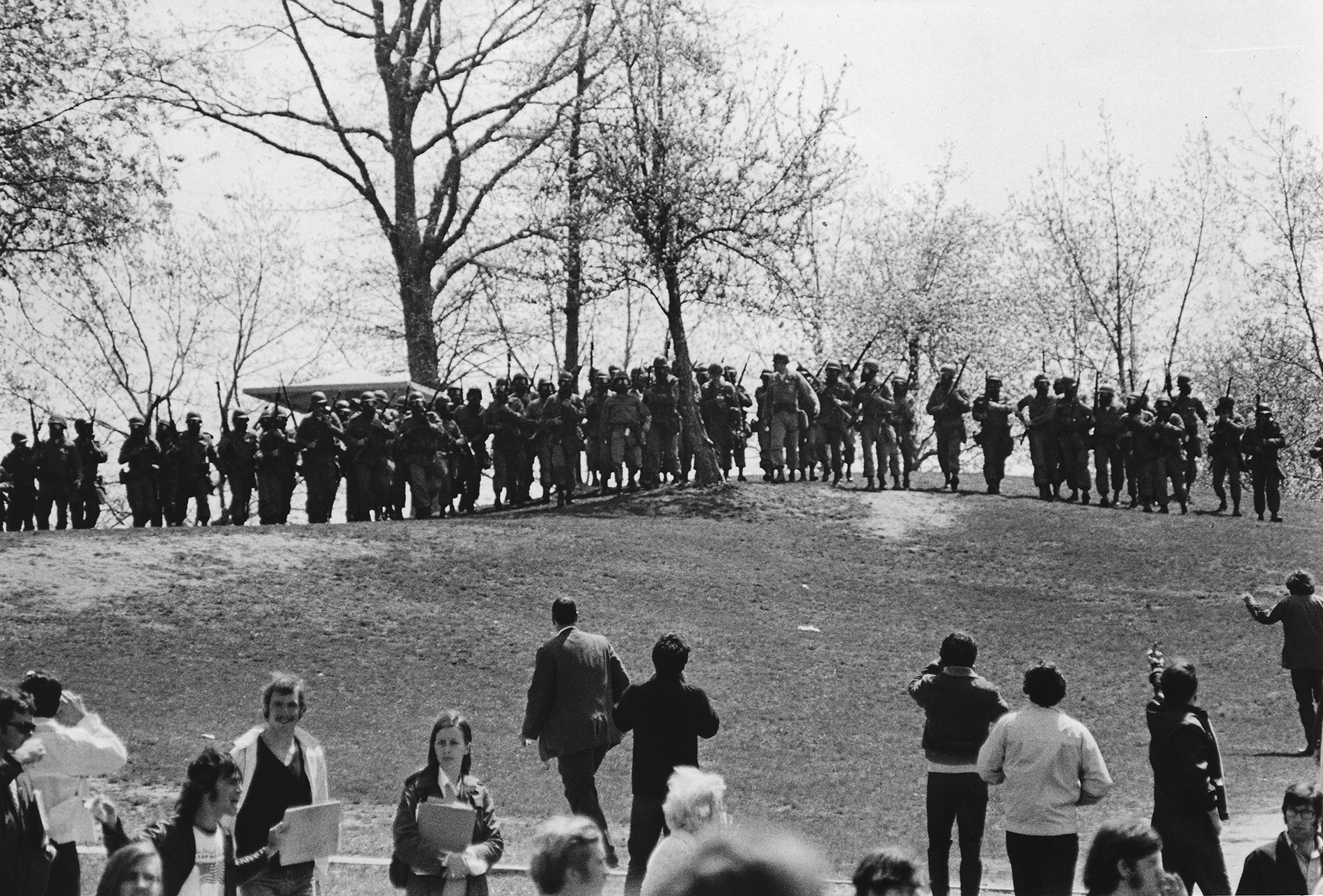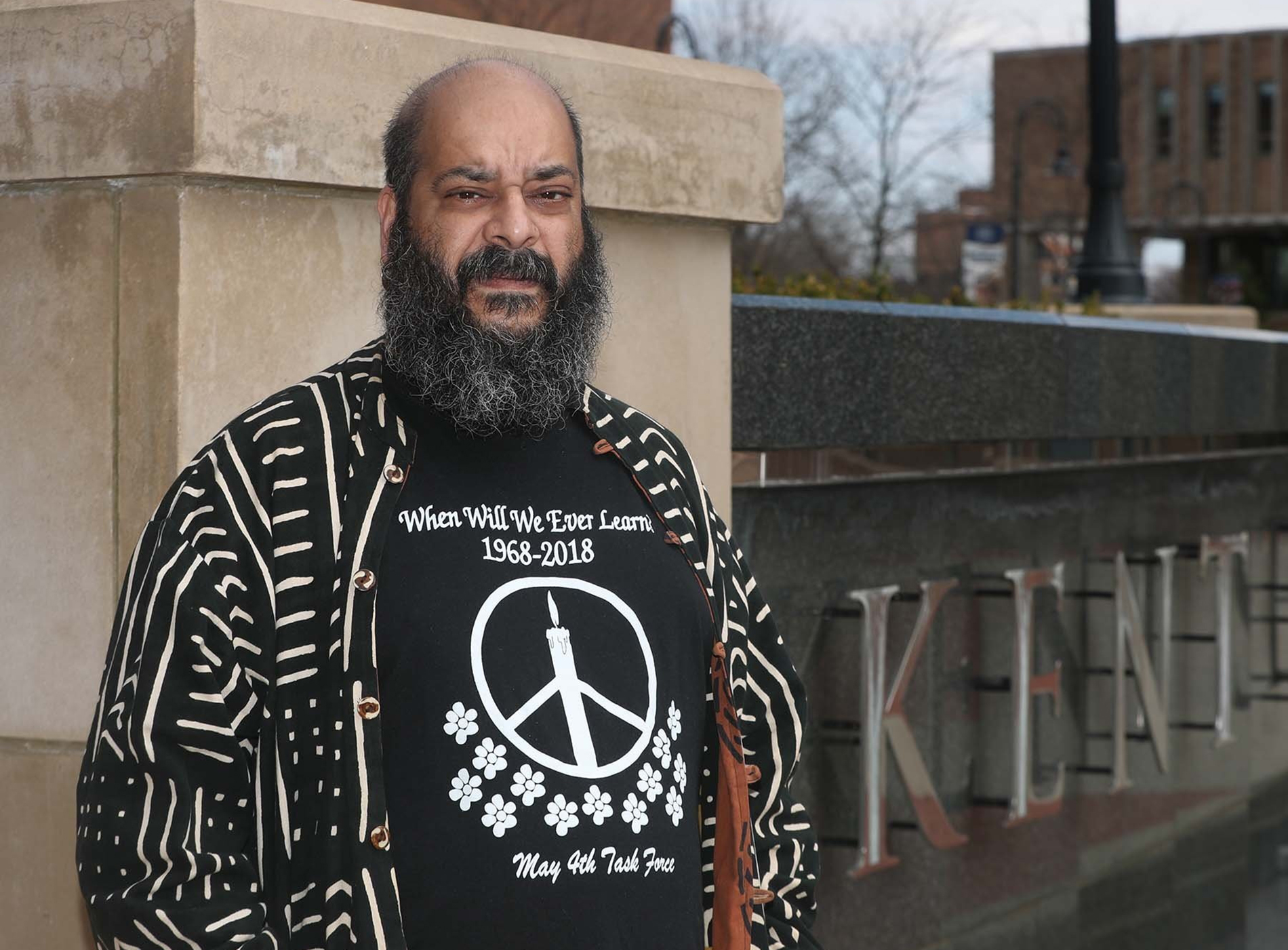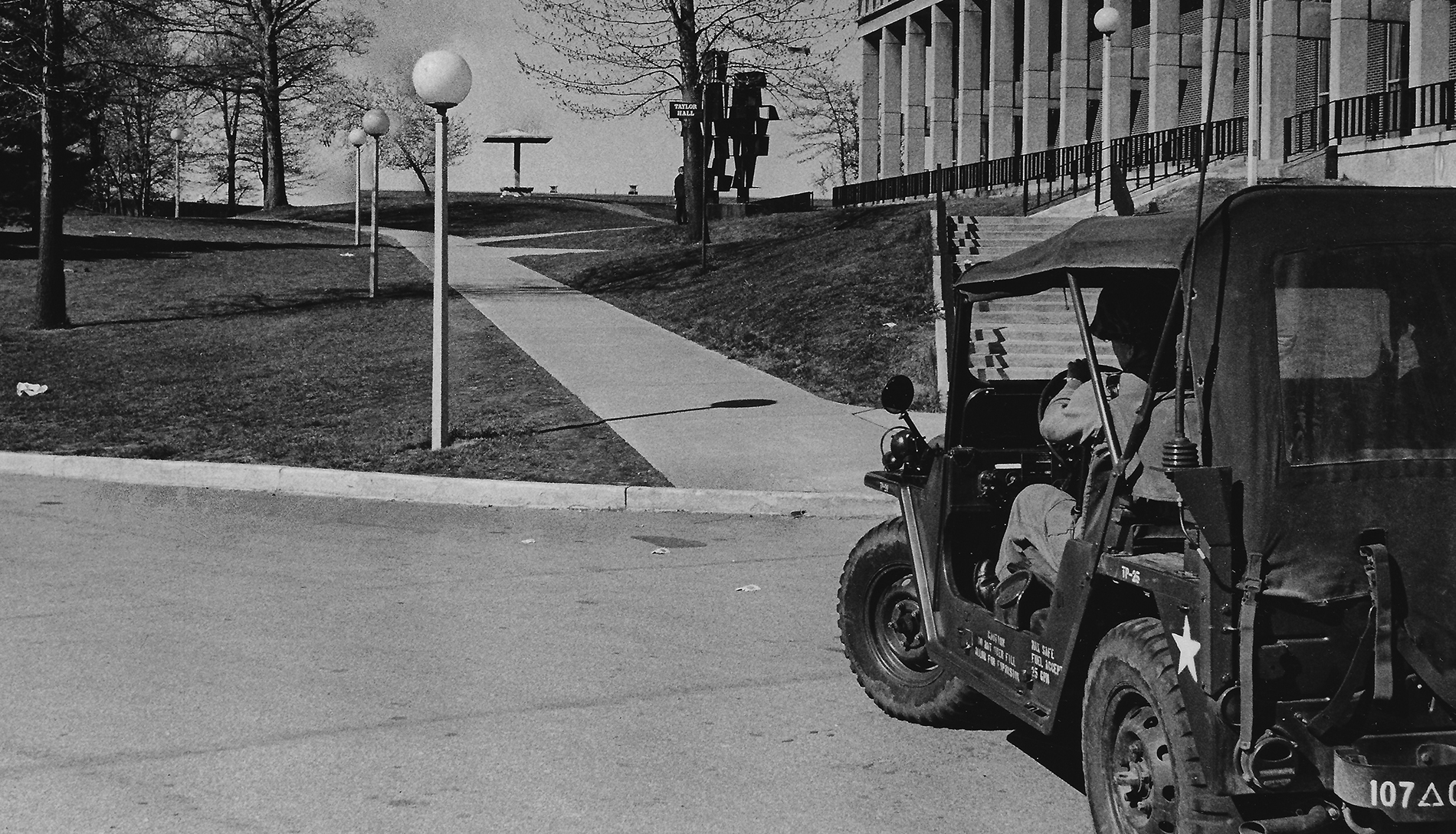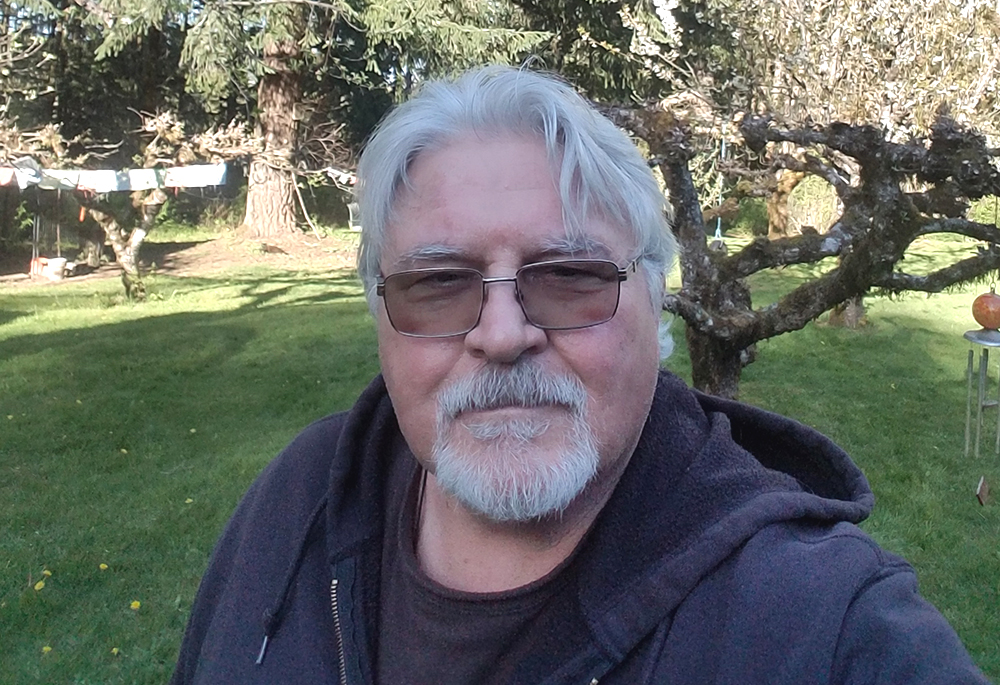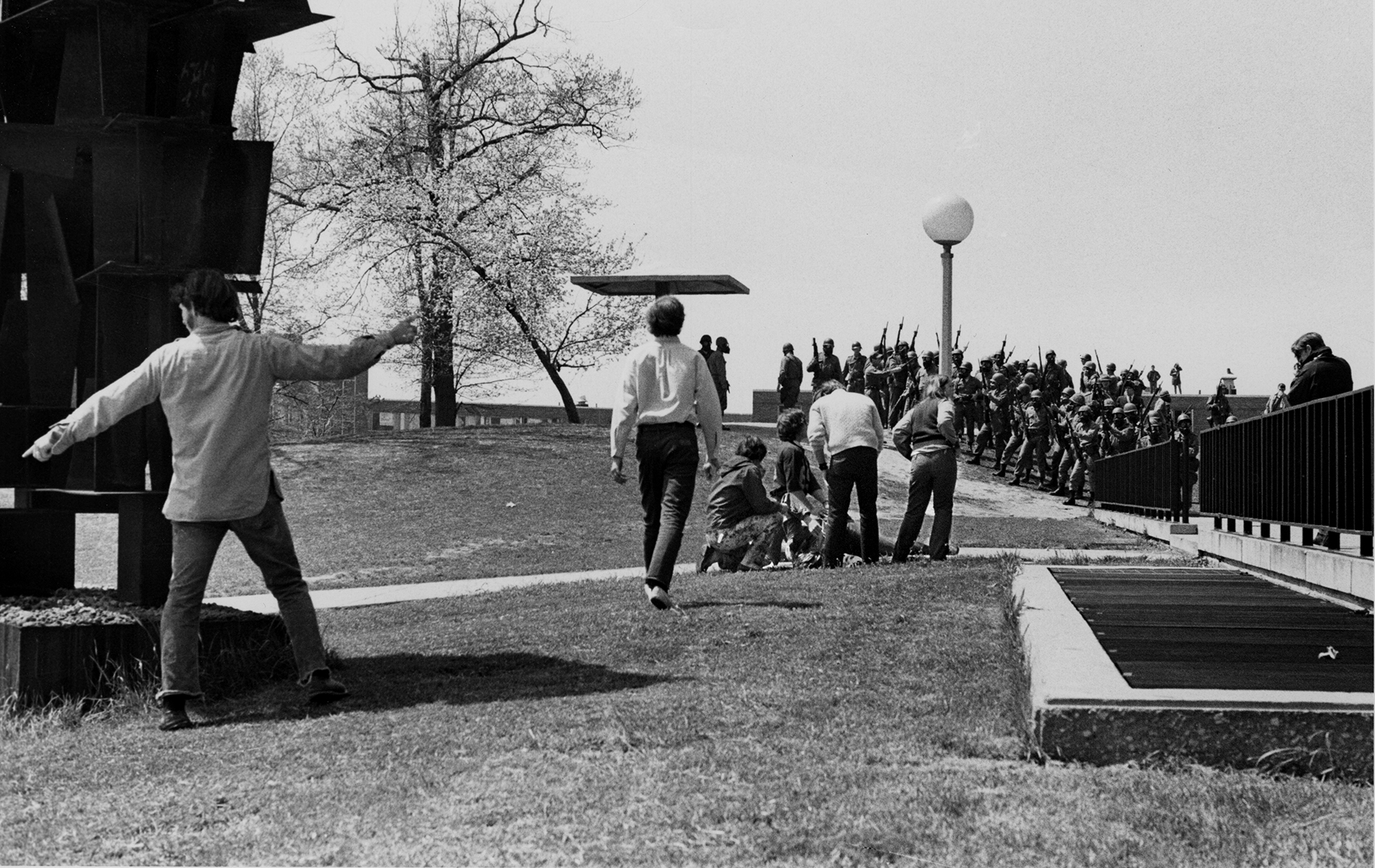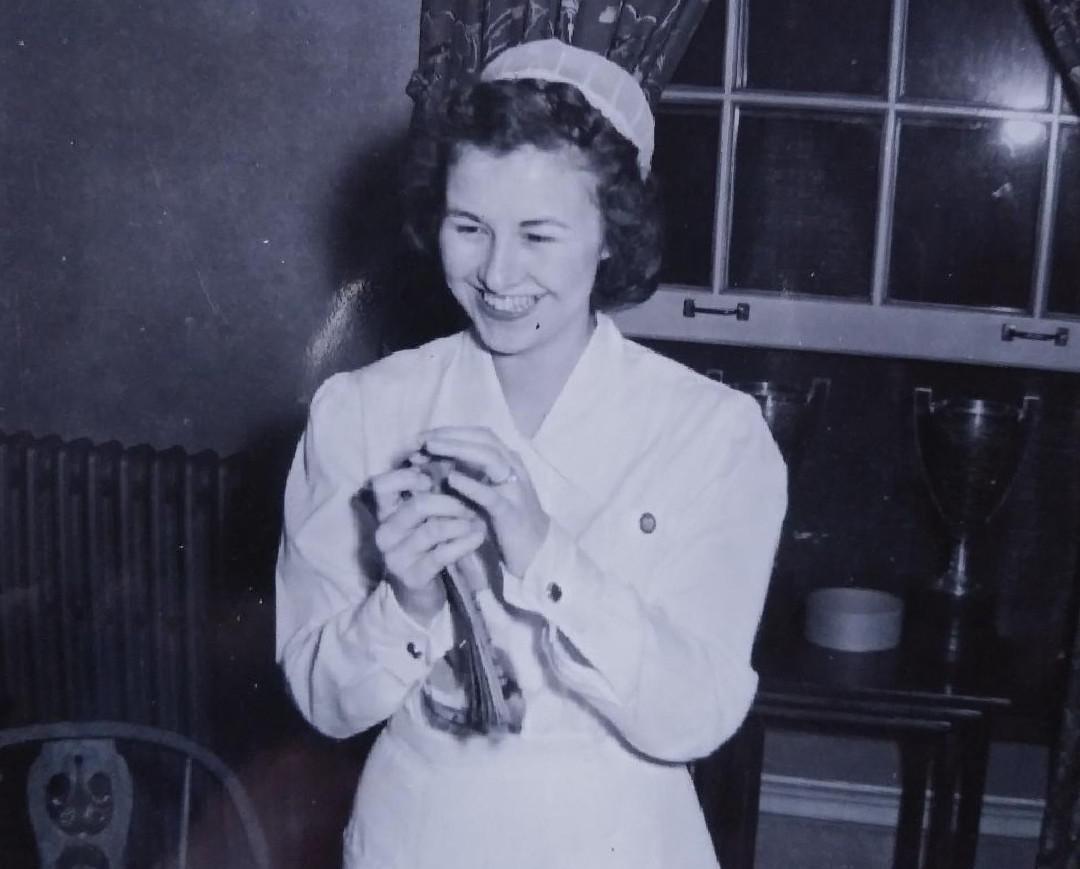Kent State shootings: Joe Lewis reflects on massacre 50 years later
By Malcolm X Abram, Akron Beacon Journal
May 2, 2020
Joe Lewis is a member of a pretty exclusive club in which few folks are clamoring to gain membership. On May 4, 1970, he was shot by the Ohio National Guard along with 12 others. Four students – Allison Krause, Jeffrey Miller, Sandra Lee Scheuer and William Schroeder – died. Lewis was one of nine wounded.
In 1970, Lewis was a self-described idealistic and naive 18-year-old Massillon kid.
“In 1969-70, 18-year-olds were much more naive than 18-year-olds now because of the sheer volume of information that’s available now, and it was also probably personal on my part, I was kind of a goody-goody and was just breaking out of my shell,” Lewis said from his home in Scappoose, Oregon.
May 4 survivor Joe Lewis now lives in in Scappoose, Oregon. Joe Lewis | Submitted photo
From his second-floor dorm room on that Monday, Lewis could see the guardsmen invade Kent State’s campus with trucks, armored cars, tear-gas masks and fixed bayonets following a weekend of anti-war protests. It was a day that began as most with classes and campus open and students trying to go about their business as usual.
Lewis attended some classes, where he said he received mixed messages from professors.
“Some said the [stuff] is going down, run for your lives and stay out of sight,” he said. “And the other message was, this is a participatory democracy and unless you participate your voice won’t be heard and being 18 and very idealistic and naive. .. .I wanted to lend my support by being present at the demonstration.”
Lewis joined the protest. He quickly found himself in the thick of things as students and guardsmen faced off, the guardsmen posturing, marching down to a practice field, firing tear gas and repeatedly reading students the Riot Act. Students responded with taunts, and some threw back the canisters.
The guardsmen marched back up the hill, turned and pointed their weapons toward the students. Lewis, in their path less than 100 yards away, took their action as a threat.
“And so my response was to gesture back with my middle finger upraised on my right hand as I stood there silent and motionless,” he said. “And it’s the only time I gave them that gesture.”
When he heard the weapons fire, he assumed the ammunition was not live.
“That was very foolish of me, but I didn’t see the need for it,” Lewis said. “…the ground in front of me started to puff up and at that time I realized the guns were loaded and in the same instance I was shot.
A bullet hit me in the abdomen and knocked me to the ground. I fell to the ground, in my mind it was like a Disney cartoon where you fly through the air and collapse down and I think it might have been quite like that.
“A bullet hit me in the abdomen and knocked me to the ground. I fell to the ground, in my mind it was like a Disney cartoon where you fly through the air and collapse down and I think it might have been quite like that,” he said.
A long and loud 13 seconds later, Lewis lay bleeding on the ground hearing the screams and wails of his schoolmates.
Lewis was hit twice. The first bullet entered along his belt line, bounced off his iliac bone and exited, leaving a hole the size of a Coke can. He was shot a second time between his fibula and tibia.
At the 1975 civil trial in Cleveland, a guardsman was asked about Lewis being shot twice.
A wounded person on the ground, probably Joseph Lewis based on the position, with others standing around him on May 4, 1970. The National Guardsmen stand in the background near the Pagoda after firing on students on Blanket Hill near Taylor Hall. The Don Drumm sculpture, Solar Totem #1, is in the left foreground. Courtesy of Kent State University Libraries | Special Collections and Archives
“When they asked why he would shoot someone who had already apparently been hit, his flippant answer was, ‘Well, everybody else was shooting him,’ ” Lewis said. “Our lawyers gasped, thinking this was attempted murder and you’re using this kind of flippant response to reply to the question.”
Lewis spent three weeks in the hospital and then went to further recover at his parents’ home in Massillon. There, all the remaining vestiges of his youthful idealism and naivete were stripped by the media and government’s accounts of the event.
“What I read in (The Massillon Independent) was a complete fabrication,” he said. “It was all lies. It said that students had attacked guardsmen with bricks and bottles and overturned cars and none of that happened at all to my knowledge not an instant at all.
“So, I’m thinking. ‘Oh my God, my neighbors next door are reading that this is what I participated in?’ ”
Lewis’ outlook changed after May 4.
So the lessons I take away from my experience with the Kent State University shootings is I don’t believe hardly anything that the media says and I don’t believe hardly anything the government says because they both lied, in my case, too many times that mattered a lot.
“So the lessons I take away from my experience with the Kent State University shootings is I don’t believe hardly anything that the media says and I don’t believe hardly anything the government says because they both lied, in my case, too many times that mattered a lot,” he said.
Though he said he is lucky in that he has no obvious physical scars from being shot, he does have “the kind of PTSD that makes me cry when I think about the incident and I think about Allison Krause.”
While he did not know the other students killed, Krause was the girlfriend of his mailbox mate. She was “attractive in every way, full of life and spunk,” he said.
After recovering, Lewis said he was initially cowed into submission but has since been to many protests.
He returned to Kent State in 1971, but that summer decided to hitchhike to Scappoose, Oregon, to see the brother of a friend. He called Scappoose a “place of healing” and has been there for the past 48 years.
Lewis came back to Ohio for the 1975 civil trial. There, he met a paralegal for the ACLU, Galen Keller, who was working on their case. He fell in love, invited her out to Oregon and they eventually married and had kids.
She died of cancer in 1991. Lewis remarried and now has seven children (“I count my kids and stepkids the same,” he said), 14 grandkids and two great-grandkids.
Lewis felt compelled to give back to the community that helped him heal. He spent 20 years as the union president and shop steward of the local water treatment plant and served 16 years on the city school board.
Lewis said he’s missed only one May 4 commemoration in the past 25 years.
For me it’s a very bittersweet time because it brings back horrible memories of pain and suffering for not just me, but for everyone who was there.
“For me it’s a very bittersweet time because it brings back horrible memories of pain and suffering for not just me, but for everyone who was there,” he said.
“But also it is a wonderful reunion for my brothers and my other Kent State family members I see during those commemoration times. It’s like the extreme of both feelings of sadness and joy like a lot of things in life. It’s very complicated.”
Malcolm X Abram can be reached at mabram@thebeaconjournal.com or 330-996-3758.
